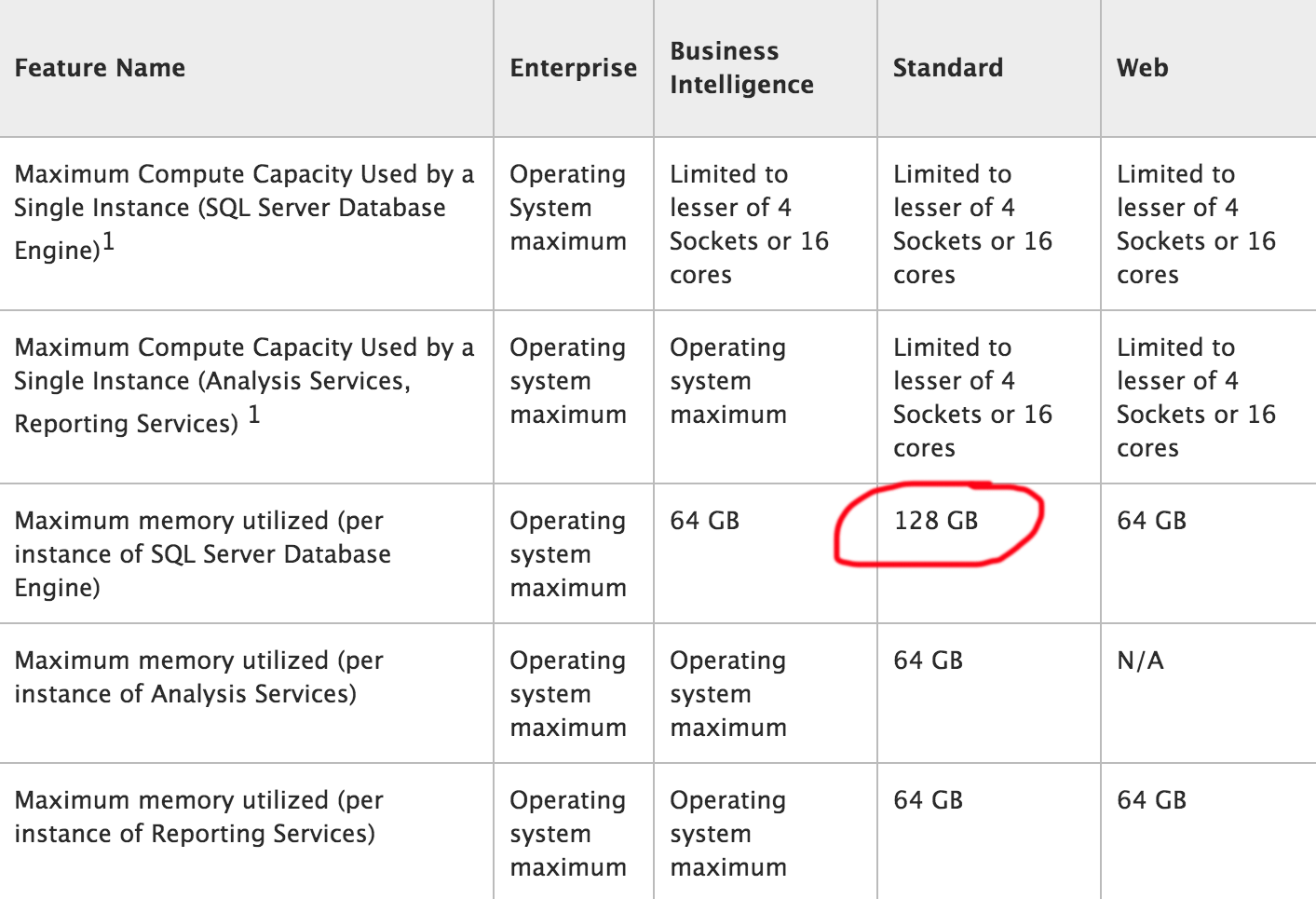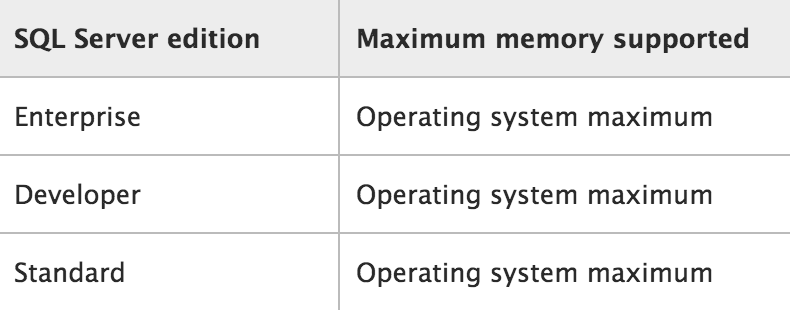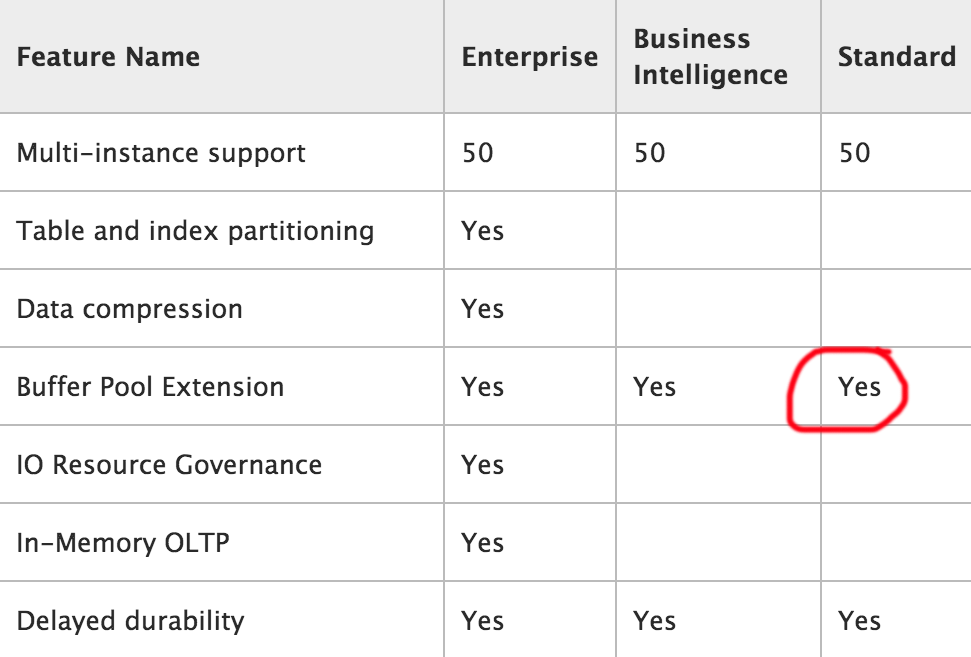Some recent changes in the documentation for SQL Server 2014 have revealed that a couple of significant changes will have a fantastic impact on Standard Edition customers.
More Memory
The first one is that the supported memory limit per instance has been raised from 64 GB in SQL Server 2008 R2 and SQL Server 2012 to 128 GB in SQL Server 2014:

Memory supported by editions of SQL Server 2014
Brent Ozar (@BrentO) caught this and blogged about it earlier this week, and I believe his earlier post complaining about Standard Edition, as well as repeated advice from MVPs such as Glenn Berry (@GlennAlanBerry) and others (see here and here), had something to do with this.
We can pretend, of course, that 128 GB is a huge win, forgetting that not too long ago – as recent as SQL Server 2008 – there was no limit at all in Standard Edition:

Memory supported by editions of SQL Server 2008
But hey, any time Microsoft decides to give us *more* for the same price, we should take as an opportunity.
Buffer Pool Extension
During the beta and public CTPs, all signs pointed to this being an Enterprise Edition feature, but – and again, this is an assumption – some loud MVPs and TAP members seem to have convinced Microsoft to loosen the restrictions here, and make this feature available to Standard Edition customers.

Partial list of features supported in SQL Server 2014
Of course these are the very people who are much more likely than Enterprise customers to be short on memory, and to be able to throw in commodity SSDs to compensate.
If you want a very digestible overview of this feature, Klaus Aschenbrenner (@Aschenbrenner) has a great introduction.








Thanks for the good news especially for the max RAM size Aaron! However, I go to that documentation page, under the "Scalability and Performance" category, it says "yes" to "Buffer Pool Extension" for Standard Edition but when I scroll down to "RDBMS Manageability", it does not say "yes" to this feature for Standard Edition? Is this a documentation bug do you think?
Yes, doc bug. I've let them know, thanks.
Getting the memory limit raised to 128GB is certainly better than nothing, but they really should have reverted back to the no RAM limit like they had in SQL Server 2008. Getting BPE in Standard Edition makes a lot of sense, especially since there is a still a RAM limit in Standard Edition. I think BPE would have been mostly ignored if it was Enterprise Edition only.